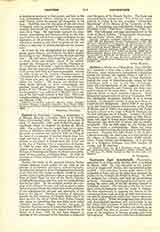

Castner (or KASTNER), CASPAR, a missionary, b. at Munich, Bavaria, October 7, 1655; d. at Peking, China, November 9, 1709. He entered the Society of Jesus, September 17, 1681, and studied theology at Ingolstadt where he finished his studies March 22, 1694. For a short time he taught logic in the gymnasium at Ratisbon; after this he devoted himself to the work of missions and sailed in 1696 for China at the head of a company of brother Jesuits from Portugal and Genoa. In China he labored with great success on the island of Shang-chuen (St. John) and in the city of Fatshan, then a competitor of Canton. In 1702 he went with Father Franciscus Noel to Lisbon and Rome in order, as representative of the Bishops of Nanking and Macao, to obtain some settlement of the question of Chinese Rites. In 1706 he returned to China, taking with him a number of missionaries.
Besides the merit of his apostolic labors, Father Castner deserves much praise for his work in the sciences of navigation, astronomy, and cartography. He called the attention of the Portuguese Government to the fact that the voyage to Macao would be much shorter if the vessels followed a direct course from the Cape of Good Hope by way of the Sunda Islands, avoiding Mozambique and Goa, and the result showed that he was right. He did excellent work in the mapping of the Chinese Empire and had so great a reputation as a mathematician that he was made president of the mathematical tribunal and instructor of the heir to the throne. Besides a number of elaborate reports on the question of Chinese Rites which he drew up with the aid of Father Noel, Father Castner also wrote an interesting but rare little work called “Relatio Sepulturte Magno Orientis Apostolo S. Francisco Xaverio erectae in Insula Sanciano MDCC”. It is an exact description of the island where from March 19 to June 2, 1700, he had been engaged in erecting, at the command of his superiors, a memorial over the grave of St. Francis Xavier. The book was accompanied by a good map. One of the few copies printed in China is in the so-called “Orban’sche Sammlung” of the library of the University of Munich. A translation was published by Father Joseph Stocklein in his “Welt-Butt” (Augsburg, 1729), No. 309. The title-page and map are reproduced in the work of Henri Cordier, “L’imprimerie sino-europeenne en Chine” (Paris, 1901), 11-15.
OTTO HARTIG

